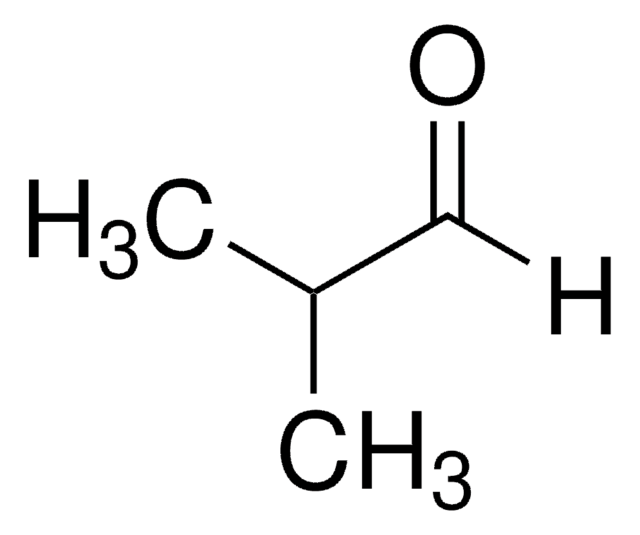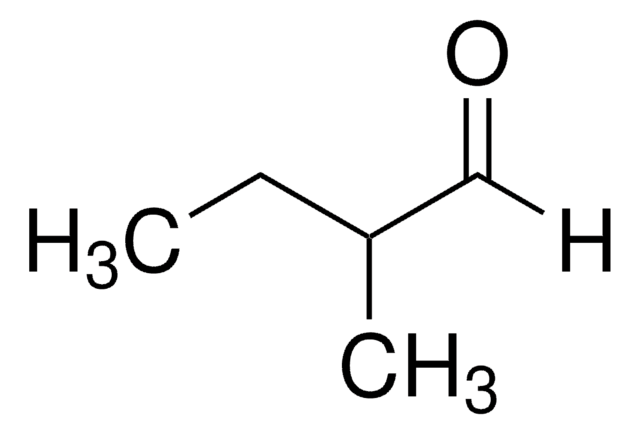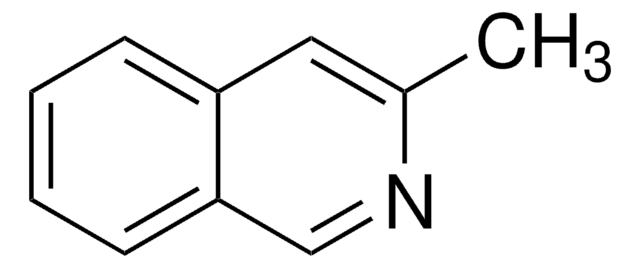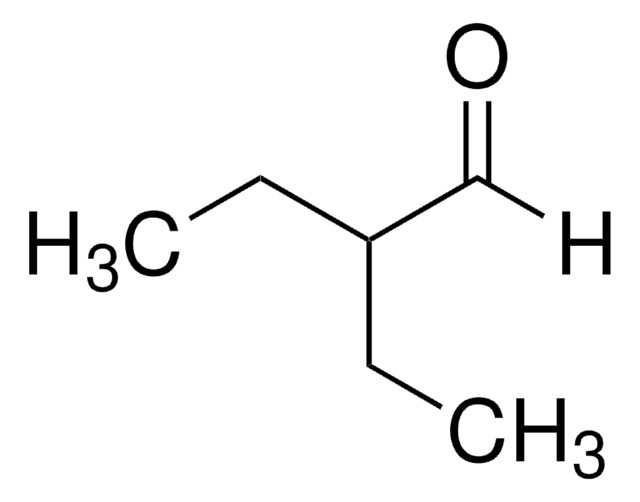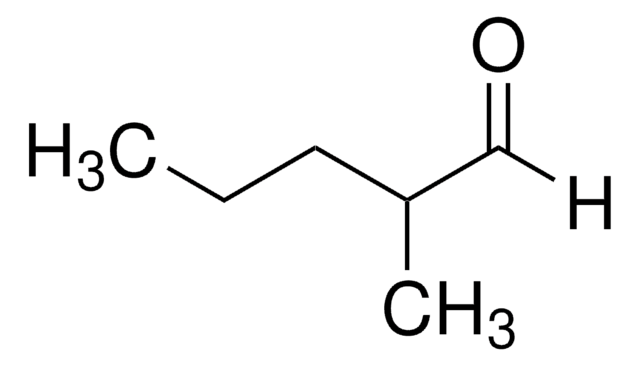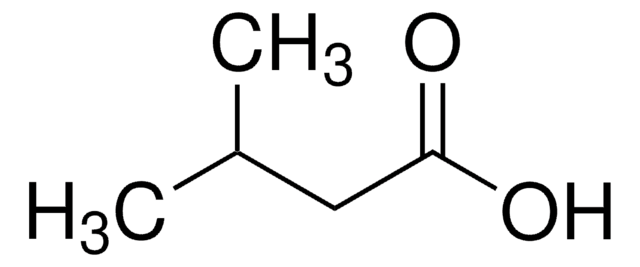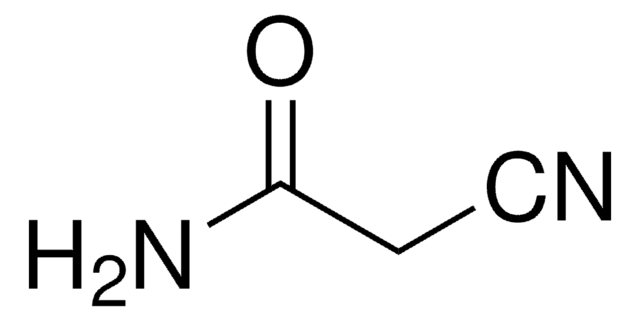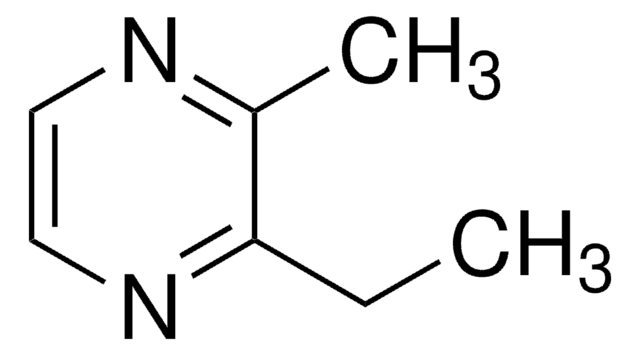146455
Isovaléraldéhyde
97%
Synonyme(s) :
3-Méthylbutanal, 3-Méthylbutyraldéhyde, NSC 404119
About This Item
Produits recommandés
Densité de vapeur
2.96 (vs air)
Niveau de qualité
Pression de vapeur
30 mmHg ( 20 °C)
Pureté
97%
Forme
liquid
Température d'inflammation spontanée
464 °F
Indice de réfraction
n20/D 1.388 (lit.)
Point d'ébullition
90 °C (lit.)
Solubilité
alcohol: miscible
diethyl ether: miscible
water: slightly soluble
Densité
0.803 g/mL at 25 °C (lit.)
Propriétés organoleptiques
pungent
Température de stockage
2-8°C
Chaîne SMILES
[H]C(=O)CC(C)C
InChI
1S/C5H10O/c1-5(2)3-4-6/h4-5H,3H2,1-2H3
Clé InChI
YGHRJJRRZDOVPD-UHFFFAOYSA-N
Vous recherchez des produits similaires ? Visite Guide de comparaison des produits
Catégories apparentées
Description générale
Isovaleraldehyde is an attractant and its interaction with zoospores of the fungus Phytophthora palmivora has been studied by binding techniques.
Application
Mention d'avertissement
Danger
Mentions de danger
Conseils de prudence
Classification des risques
Aquatic Chronic 2 - Eye Irrit. 2 - Flam. Liq. 2 - Skin Sens. 1 - STOT SE 3
Organes cibles
Respiratory system
Code de la classe de stockage
3 - Flammable liquids
Classe de danger pour l'eau (WGK)
WGK 2
Point d'éclair (°F)
32.9 °F - closed cup
Point d'éclair (°C)
0.5 °C - closed cup
Équipement de protection individuelle
Eyeshields, Faceshields, Gloves, type ABEK (EN14387) respirator filter
Certificats d'analyse (COA)
Recherchez un Certificats d'analyse (COA) en saisissant le numéro de lot du produit. Les numéros de lot figurent sur l'étiquette du produit après les mots "Lot" ou "Batch".
Déjà en possession de ce produit ?
Retrouvez la documentation relative aux produits que vous avez récemment achetés dans la Bibliothèque de documents.
Les clients ont également consulté
Protocoles
-Tolualdehyde; Valeraldehyde; Isovaleraldehyde
Notre équipe de scientifiques dispose d'une expérience dans tous les secteurs de la recherche, notamment en sciences de la vie, science des matériaux, synthèse chimique, chromatographie, analyse et dans de nombreux autres domaines..
Contacter notre Service technique